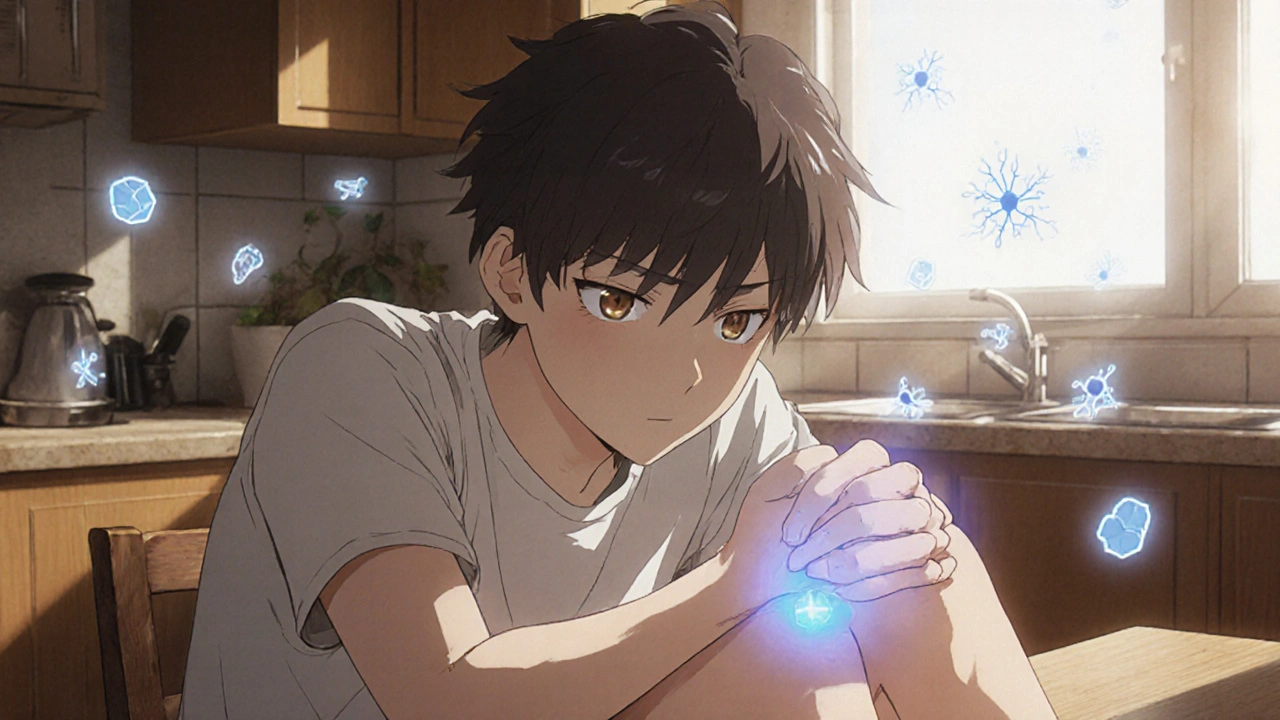
Calcium Needs Calculator
Your Calcium Needs
Calculate your personalized daily calcium requirements based on factors that affect bone health and calcium absorption.
Your Recommended Daily Calcium Intake
Recommended Sources
Meet your calcium needs through a combination of:
- Dairy products (milk, yogurt, cheese)
- Fortified plant milks
- Leafy green vegetables
- Sardines and salmon with bones
When your blood calcium levels dip too low, your bones can start paying the price. That link between hypocalcemia and osteoporosis isn’t just a medical footnote - it’s a real health concern that affects millions of people worldwide. Below we break down the science, the symptoms, and practical steps you can take to protect your skeleton.
What Is Hypocalcemia?
Hypocalcemia is a condition where the concentration of calcium in the blood falls below the normal range, typically under 8.5 mg/dL. Calcium is essential for muscle contraction, nerve signaling, and blood clotting, so a shortage can trigger a cascade of symptoms.
- Muscle cramps or spasms (often called tetany)
- Numbness or tingling around the mouth and fingertips
- Fatigue and irritability
- In severe cases, seizures or cardiac arrhythmias
Common causes include vitamin D deficiency, low parathyroid hormone (PTH) levels, chronic kidney disease, and certain medications such as bisphosphonates.
Understanding Osteoporosis
Osteoporosis is a progressive disease characterized by reduced bone mineral density (BMD) and deterioration of bone tissue, making fractures more likely. The condition is often called a "silent disease" because most people feel fine until a fracture occurs.
- Loss of height due to vertebral compression
- Back pain from fractured vertebrae
- Increased risk of hip and wrist fractures
Age, gender (women are at higher risk), genetics, low calcium intake, sedentary lifestyle, and hormonal changes are the main risk drivers.
How Low Calcium Leads to Bone Loss
The body strives to keep blood calcium stable. When calcium drops, the parathyroid glands release PTH, which pulls calcium from bones to restore normal levels. Over time, this constant remodeling weakens the skeleton.
Key physiological steps:
- PTH stimulates osteoclasts - cells that break down bone matrix.
- Calcium is released into the bloodstream.
- Repeated cycles reduce bone mass, lowering BMD and raising fracture risk.
Chronic hypocalcemia essentially forces your bones to become a calcium bank, a trade‑off that leads straight to osteoporosis.
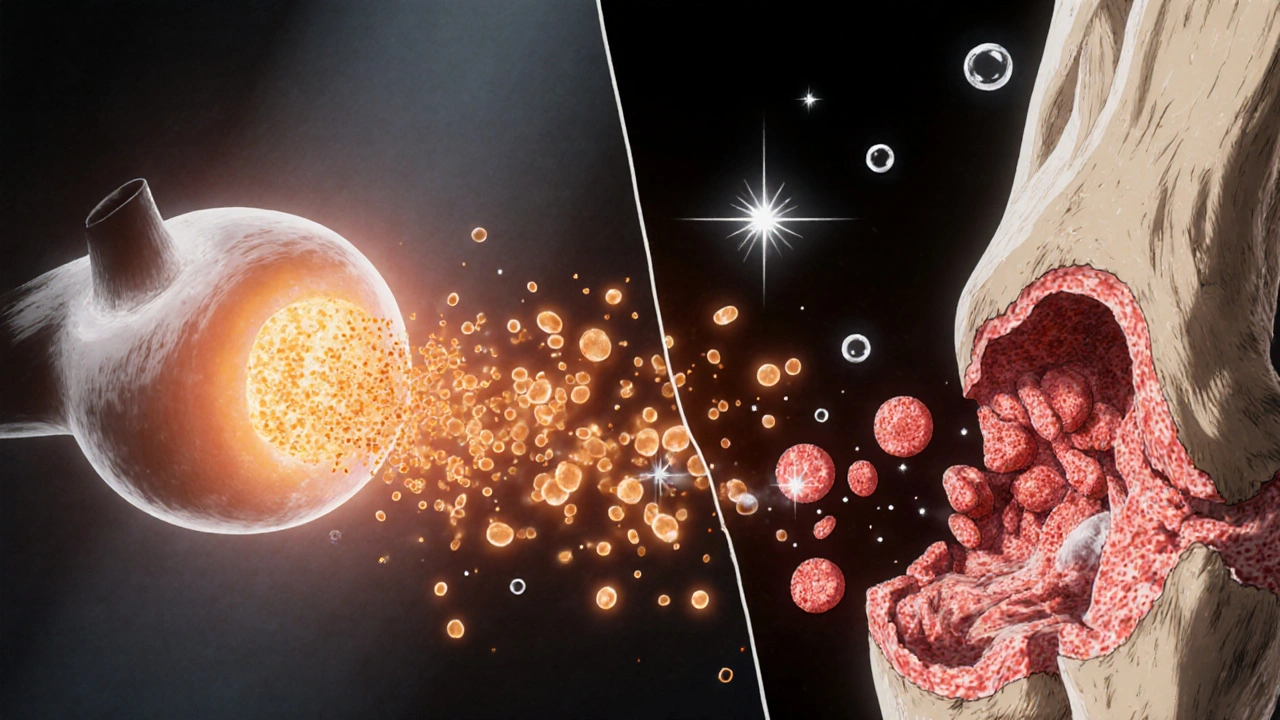
Shared Risk Factors and Overlapping Symptoms
Both conditions share several red flags. Recognizing them early can prompt testing before damage becomes irreversible.
| Risk Factor | Impact on Calcium Levels | Impact on Bone Density |
|---|---|---|
| Vitamin D Deficiency | Reduces intestinal calcium absorption | Limits bone mineralization, accelerates loss |
| Chronic Kidney Disease | Impaired conversion of vitamin D to active form | Elevates phosphate, triggers secondary hyperparathyroidism |
| Long‑term Steroid Use | Decreases calcium absorption in gut | Promotes osteoclast activity, reduces BMD |
| Low Dietary Calcium | Directly drops serum calcium | Provides insufficient substrate for bone formation |
Diagnosing the Connection
Doctors combine blood work and imaging to get the full picture.
- Serum Calcium Test: Measures total and ionized calcium. Low ionized calcium is the most reliable indicator of hypocalcemia.
- Parathyroid Hormone (PTH) assay: Helps differentiate between primary (low PTH) and secondary (high PTH) causes.
- 25‑Hydroxy Vitamin D level: Checks for deficiency.
- Bone mineral density test (DXA scan) assesses osteoporosis severity by measuring grams of mineral per square centimeter of bone.
When both serum calcium and BMD are abnormal, clinicians suspect a causal relationship and investigate underlying disorders.
Management Strategies
Treatment tackles two fronts: correcting calcium levels and slowing bone loss.
Dietary Adjustments
- Increase calcium‑rich foods: dairy, fortified plant milks, leafy greens (kale, bok choy), sardines with bones.
- Boost vitamin D intake: sunlight exposure 10-15 minutes daily, fortified cereals, fatty fish (salmon, mackerel).
- Limit caffeine and excessive salt, both of which increase calcium excretion.
Supplementation
When diet falls short, supplements fill the gap. Choose based on lab results:
- Calcitriol (active vitamin D) is prescribed for chronic kidney disease patients to improve calcium absorption.
- Calcium carbonate or citrate tablets provide 500-600 mg elemental calcium per dose. Split doses for better absorption.
Medications for Osteoporosis
Bone‑protective drugs are added once osteoporosis is confirmed.
- Bisphosphonates (e.g., alendronate, risedronate) inhibit osteoclast activity and reduce fracture risk.
- Denosumab, a monoclonal antibody, offers a monthly injection option for those intolerant to oral bisphosphonates.
- Selective estrogen receptor modulators (SERMs) and parathyroid hormone analogs (teriparatide) are alternatives for severe cases.
Lifestyle Tweaks
- Weight‑bearing exercise (walking, jogging, resistance training) stimulates bone formation.
- Avoid smoking and excessive alcohol, both of which accelerate calcium loss.
- Maintain a healthy body weight; underweight individuals lose bone faster.

Prevention: Keeping Calcium in Check
Regular monitoring catches problems early.
- Annual serum calcium and vitamin D tests for adults over 50, or sooner if you have risk factors.
- DXA scans every 2-3 years after a diagnosis of osteoporosis, or at age 65 for the general population.
- Adopt a calcium‑rich diet from adolescence; bone mass peaks around age 30.
- Stay active with at least 150 minutes of moderate aerobic activity plus two strength‑training sessions per week.
By keeping these habits, you give your skeleton the resources it needs to stay strong.
Quick Checklist - What to Remember
- Low blood calcium triggers bone‑stealing PTH spikes.
- Vitamin D, kidney health, and diet are the biggest levers.
- Blood tests + DXA scan = full diagnosis.
- Calcium + vitamin D supplements, plus bone‑protective meds, halt the cycle.
- Exercise, quit smoking, limit alcohol - simple moves that protect bone.
Frequently Asked Questions
Can hypocalcemia cause fractures on its own?
Low calcium itself doesn’t fracture bones, but the body’s response-releasing calcium from bone-weakens the skeleton and raises fracture risk.
How quickly can calcium supplements improve bone density?
Supplements raise serum calcium within days, but measurable BMD gains generally appear after 6‑12 months of consistent therapy combined with weight‑bearing exercise.
Is it safe to take calcium and vitamin D without a doctor’s order?
For most adults, moderate doses (up to 1,000 mg calcium and 800-1,000 IU vitamin D daily) are safe. However, high doses can cause kidney stones or cardiovascular concerns, so a blood test is wise before starting.
What role does magnesium play in this connection?
Magnesium aids the conversion of vitamin D to its active form and helps regulate PTH. Deficiency can worsen both hypocalcemia and bone loss.
Can osteoporosis be reversed?
While you can’t fully restore lost bone mass, treatment can stabilize or modestly increase BMD, dramatically lowering fracture risk.
Understanding the tie between hypocalcemia and osteoporosis empowers you to act before a fracture happens. Keep an eye on your calcium, stay active, and partner with your healthcare provider for regular check‑ups.


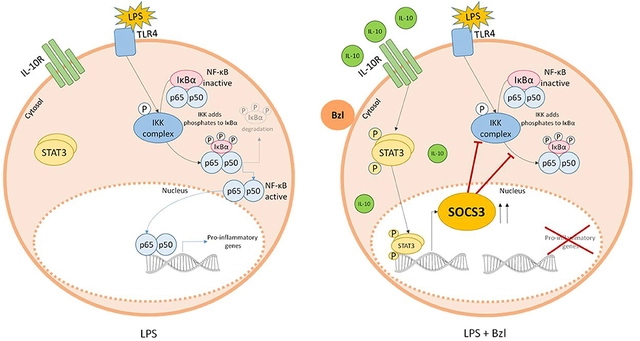
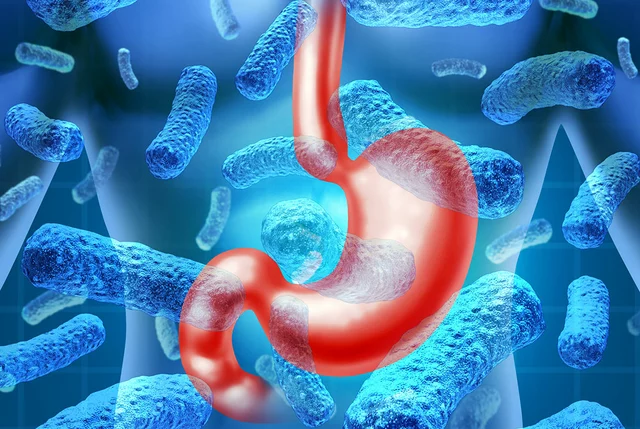
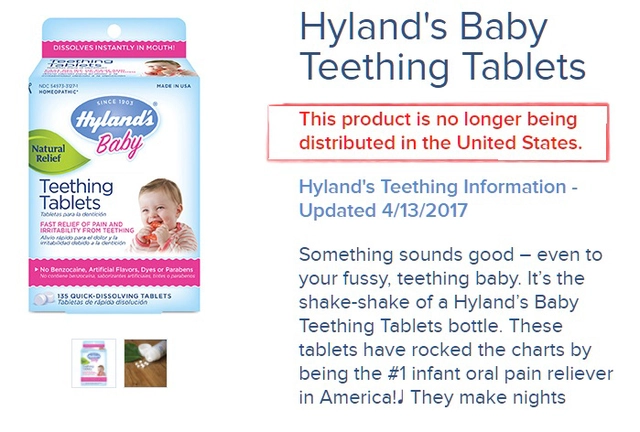
Kimberly Lloyd
October 21, 2025 AT 00:51It's fascinating how a tiny ion like calcium can dictate the very strength of our skeleton, reminding us that even the smallest elements hold great responsibility. Maintaining balance feels like a meditation on wellbeing, and with a bit of mindful nutrition we can keep our bones resilient.
Lolita Gaela
October 25, 2025 AT 15:57The pathophysiology hinges on parathyroid hormone-mediated osteoclastogenesis; when serum calcium dip, PTH spikes, accelerating bone resorption. Clinicians should monitor ionized calcium alongside 25‑hydroxyvitamin D to differentiate primary versus secondary hypocalcemia, and consider bisphosphonate therapy only after reestablishing calcium homeostasis.
Giusto Madison
October 30, 2025 AT 07:04Listen up, folks-if you keep ignoring those tingling fingers and muscle cramps, you’re practically inviting your bones to betray you later. Get that blood work done, boost your calcium intake, and smash some weight‑bearing workouts ASAP.
Xavier Lusky
November 3, 2025 AT 22:11What they don’t tell you is that the pharma industry pushes calcium supplements to keep you dependent, while the real cure lies in hidden dietary protocols they conceal from the public.
Ivan Laney
November 8, 2025 AT 13:17Let me set the record straight: the interplay between hypocalcemia and osteoporosis is not some abstract medical curiosity, it is a cornerstone of national health that our policymakers consistently downplay. First, chronic low serum calcium forces the parathyroid glands into chronic overdrive, releasing PTH in a relentless quest to salvage homeostasis. This hormone, in turn, activates osteoclasts, the very cells that dissolve bone matrix to liberate calcium. Over months and years, this catabolic cycle chips away at trabecular and cortical bone, eroding structural integrity. The result is a population-wide surge in fracture incidences, which translates directly into higher healthcare expenditures and reduced productivity. Moreover, the pharmaceutical lobby exploits this vulnerability by marketing bisphosphonates as miracle pills, while neglecting the vital role of dietary calcium and vitamin D. They conveniently ignore that a balanced diet rich in dairy, leafy greens, and fortified foods can dramatically curb the need for synthetic interventions. In addition, many clinicians shy away from ordering regular serum calcium panels, opting instead for a one‑time lipid profile that does little to protect skeletal health. This negligence is compounded by a cultural shift toward sedentary lifestyles, where office chairs replace weight‑bearing activity, further accelerating bone loss. Even the educational curriculum glosses over calcium’s importance, depriving future generations of essential knowledge. Governments should therefore invest in public health campaigns that emphasize routine calcium monitoring, especially for at‑risk groups over fifty. Subsidizing calcium‑rich food programs would be a far more sustainable strategy than continuously funding expensive drug regimens. Let’s not forget the synergistic effect of magnesium, which facilitates vitamin D activation and, by extension, calcium absorption-another piece the industry fails to spotlight. The scientific community must champion comprehensive, multimodal approaches that combine nutrition, exercise, and judicious pharmacotherapy. Only then can we reclaim control over our bone health and safeguard the nation’s future.
Chirag Muthoo
November 13, 2025 AT 04:24While I respect your fervor, it is essential to ground our recommendations in peer‑reviewed evidence and avoid hyperbolic nationalistic rhetoric. Regular calcium and vitamin D assessments, coupled with DXA scanning, remain the prudent clinical pathway. Additionally, encouraging community exercise programs can address the sedentary trend you mentioned. I appreciate the comprehensive view, yet we must balance enthusiasm with scientific rigor.
Angela Koulouris
November 17, 2025 AT 19:31Think of your bones like a garden: you need the right soil (calcium), sunlight (vitamin D), and regular watering (weight‑bearing activity) to keep it thriving. If any of those elements are missing, the garden wilts, and you’ll see cracks forming where the roots once held strong. So nourish, move, and monitor-you’ll reap a sturdy, vibrant skeleton.
Harry Bhullar
November 22, 2025 AT 10:37Exactly, and to add a layer of nuance, the type of calcium source matters; dairy provides both calcium and lactose, which aids absorption, whereas plant‑based sources often require concurrent vitamin D for optimal uptake. Moreover, supplement timing-splitting doses into two or three intervals-can mitigate the risk of hypercalcemia and improve bioavailability. Finally, integrating resistance training at least twice weekly not only stimulates osteoblast activity but also enhances muscular support around joints, reducing fracture risk. In practice, a regimen combining fortified foods, timed supplementation, and progressive overload yields the best outcomes for bone density preservation.
Dana Yonce
November 27, 2025 AT 01:44Got my calcium labs today-everything looks solid! 😊
erica fenty
December 1, 2025 AT 16:51Calcium homeostasis, PTH surge, osteoclastic activation-critical triad! Rapid correction, dietary fortification, monitoring-essential.
Sakib Shaikh
December 6, 2025 AT 07:57Yo, u think u kno all bout that? Actually the real issue is you ain't gettin enough magnesium, which messes up the whole vitamin D activation process, bro.
Ashok Kumar
December 10, 2025 AT 23:04Sure, just pop a few pills and hope your bones magically get tougher-because that's how biology works.